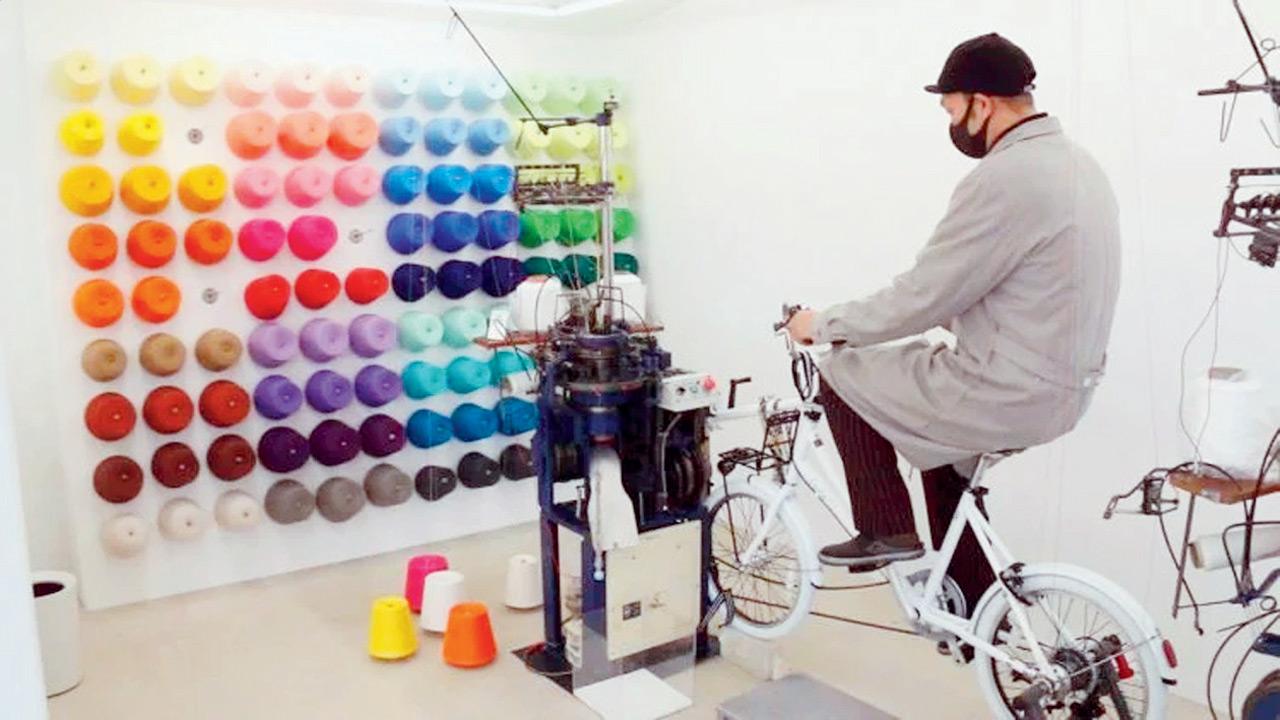This Bosnian man gets a kick mimicking the mighty Nordic warrior legends

Stipe Petic, 57, often dresses as a warrior, flaunting his weapons. Pics/Facebook
Stipe Petic, a 57-year-old Bosnian man with no nordic background, was so impressed by the Vikings TV series that he started calling himself Ragnar Kavurson and making axes for a living.
ADVERTISEMENT
Petic claims that his fascination with the culture started with a binge-watching session of History’s hit series, Vikings. Coming back to his hometown of Tomislavgrad in Southern Bosnia after 10 years of working on construction sites in Germany, he became fascinated by the saga of the legendary hero Ragnar Lothbrok and his wife Lagertha. After changing his look to mimic that of a Nordic warrior of legend, and borrowing the name of his favourite Viking character, Ragnar, the ‘Bosnian Viking’ started making intricately decorated Viking axes and shields.

“The first season is my favourite. At first, I liked Ragnar’s personality but, to be honest, I like Lagertha too. She blew my mind away,” said Petic. “I had a lot of free time, because I live here alone and then while watching the series I saw Ragnar’s axe, I liked it, and I wanted to make one just like it”. Kavurson’s workshop in Tomislavgrad is now full of Viking axes and shields, alongside portraits of logs used for axe throwing practice, and detailed portraits of Ragnar and Lagertha, as portrayed by Travis Fimmel and Katheryn Winnick. Outside the workshop is a functional ‘drakkar’, a flat-bottomed Viking boat that the 57-year-old made himself and that he sometimes takes out on a nearby lake.
Sporting a long, white beard and braided hair, and wearing traditional tunics, Ragnar Kavurson looks very much the part of a modern Viking. He has a job working as a driver for the regional government, but he dedicates all of his free time to his passion, making Viking axes and shields that he then sells for anywhere between 25 and 300 Euros.
Build your own sock
A sock factory in Japan has everyone pedalling their feet
Souki Socks, a small sock factory in Japan’s Nara Prefecture, has devised a machine that allows people to knit their own socks by pedalling on a stationary bicycle.

Before pedalling, factory visitors choose the size of the socks as well as the colours of the threads they want to use. Specialised staff connect the threads to the machine, and when they’re done, it’s time to pedal. Making a pair of socks is said to take about 10 minutes. After you’re done pedalling, the staff sew the toes and press-finish the knitted socks, for you to take home.
With the COVID-19 pandemic keeping people from travelling as much as they used to, many didn’t have the opportunity to visit the factory and knit their own socks, so Souki decided to have their management do the pedalling for them.
Seagulls cause menace in Venice

Hotels in Venice, Italy, announced guests are being armed against the city’s aggressive seagulls with an unusual form of protection: water guns. The AVA said it has been considering further measures to protect tourists from gulls, including the use of electrostatic and sound-based devices.
Alabama man steals 70-ton crane

An Alabama man who called a wrecker service asking to have a 70-ton crane pulled out of the woods is now charged with stealing the heavy machinery, sheriff’s officials said. The man who wanted the crane moved fled before officers arrived, driving the rig into a ditch.
Message from the past
A message in a bottle that was thrown into the Atlantic ocean in 1995 was discovered after it came ashore in Brittany, France. The bottle came from Jonathan ‘Ivan’ Saunders who was working as the engineer on a fishing boat from Gloucester, Mass, named the Hannah Boden. Saunders left his address at the bottom of the message and also placed a dollar bill inside the bottle. The letter was dated April 20, 1995, and the bottle was released near Puerto Rico.
Snacking over toilet is enjoyed by some: Research

A new poll has found that a shocking number of people have voluntarily eaten food out of garbage cans. But, in a more alarming reveal, more than one-fifth of those surveyed said they have no problem eating food in the bathroom—and 18 per cent of those surveyed admitted to eating while actually sitting on the toilet. The concerning findings come from 2,000 UK adults who confessed to the most bizarre places where they have shamelessly eaten food. “The locations speak for themselves, of the lengths people will go to have a quick bite. Sometimes, simply just snacking away from others can give you a moment of peace” psychologist Jo Hemmings said.
 Subscribe today by clicking the link and stay updated with the latest news!" Click here!
Subscribe today by clicking the link and stay updated with the latest news!" Click here!







